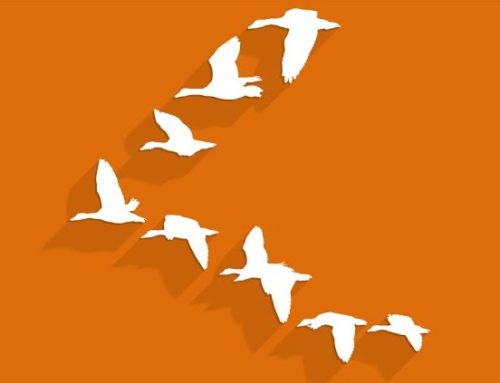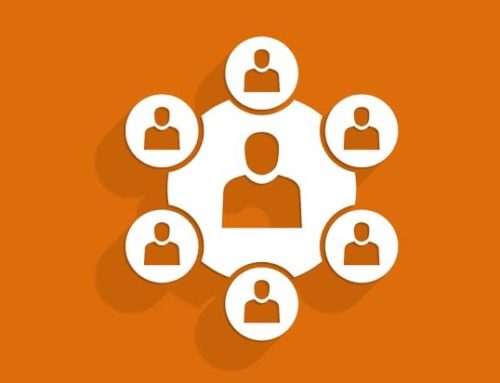Network Game Theory
Many of the choices people make, such as which type of computer operating system to purchase, are dependent upon the network of connections that they have with others and are thus best modeled using a combination of network analysis and game theory.
Network game theory is the combination of network analysis and game theory to the study of situations of interdependence between adaptive agents. Network game theory builds upon and expands classical game theory by incorporating the network of connections – the context – within which agents make their choices, in so doing it potentially offers a richer model of the behavior of agents within games.1 Networks are important in many dimensions to people’s lives and how they make decisions. Most decisions that people make, from which products to buy to whom to vote for, are influenced by the choices of their colleagues, partners, friends or acquaintances. For example, the decision of an individual as to whether or not to purchase a new product, join a new club or find a job is often influenced by the choices of their friends and acquaintances. This empirical fact of social behavior motivates the ongoing development of the domain of network game theory.2
Network theory helps to model the networks of interdependencies within which agents typically make their decisions in the real world. A unicellular organism may have survived the course of history largely based upon its capacity to fight for resources with other unicellular organisms. But the cells in multicellular organisms have survived based upon their capacity to cooperate. They form part of large systems of coordination and they are selected for based upon their capacity to interoperate with other elements within large networks that contribute to the workings of the whole organism.3
Likewise in a ghetto full of criminal gangs, it may be one’s capacity to look out for one’s own skin that will enable one to get ahead. But in another area of town where people earn their living as part of large complex organizations, it is primarily your capacity to interoperate with others and form part of these large organizations that determines your payoff. In advanced economies, people form part of large cooperative organizations which is essentially what is supporting them and determining their payoff. In such an event one needs to be able to interoperate with others effectively, to be of value to the organization, and thus succeed in the overall game.
The idea is that evolution creates networks of cooperation that are able to intercept resources more effectively because of the coordinated effort. People’s capacity to survive within such systems is then based upon their capacity for cooperation, instead of competition, as it might be if they were outside of these networks of cooperation, in the jungle so to speak.4 Thus what we do, our choice of strategy and the payoff for cooperation or defection in the real world, depends hugely on the context outside of the immediate game and this context can be understood as a network of agents interacting. When we form part of networks of coordination and cooperation our payoffs come to depend largely on what others around us are doing. I want to buy a certain computer operating system but the payoff will depend on what operating system my colleagues are using. Or people want to learn a language only if the other people around them also speak that language.
Spatial Distribution
Recent research conducted with Tanzania tribespeople shows how the formation of social networks of cooperation goes all the way back to the origins of civilization
A key factor in the evolution of cooperation is spatial distribution. If you can get cooperators to cluster together in a social space, cooperation can evolve.5 In research conducted by Christakis and Fowler, they have shown that our experience of the world depends greatly on where we find ourselves within the social networks around us.6 Particular studies have found that networks influence a surprising variety of lifestyle and health factors, such as how prone you are to obesity, smoking cessation, and even happiness.7
The experiment they conducted took place in Tanzania with the Hadza, one of the last remaining populations of hunter-gatherers on the planet whose lifestyle predates the invention of agriculture. They designed experiments to measure ties and social cooperation within the communities. To identify the social networks existing within the communities they first asked adults to identify individuals they would prefer to live with in their next encampment. Second, they gave each adult three straws containing honey and were told they could give these straws as gifts to anyone in their camp. This generated 1,263 campmate ties and 426 gift ties.
In a separate activity, the researchers measured levels of cooperation by giving the Hadza additional honey straws that they could either keep for themselves or donate to the group. When the networks were mapped and analyzed, the researchers found that co-operators and non-cooperators formed distinct clusters within the overall network. When they looked at individual traits with the ties that they formed they found clearly that cooperators clustered together, becoming friends with other cooperators. The study’s findings describe elements of social network structures that may have been present early in human history. Suggesting how our ancestors may have formed ties with both kin and non-kin based on shared attributes, including the tendency to cooperate. According to the paper, social networks likely contributed to the evolution of cooperation.8
Model
Illustration of a twitter social network, created by Matt Biddulph, click image to see it in full size
The emerging combination of network theory and game theory offers us an approach to looking at such situations. The idea is that there are different individuals making decisions and they are on a network and people care about the actions of their neighbors. As an example we can think of an individual, Kate, choosing whether to go to university or not, and this action will depend upon how many of her friends are choosing to go to university also. So the pay off for the individual will depend on how much she likes the idea of going to university as an individual, but also how many of her friends choose to go and on how many friends she has. So in this networked game the individual might have a threshold, say Kate will only go to the university if at least two of her friends are also going and her friends also have the same threshold.
This is an example of a strategic complements game, meaning that the more of one’s neighbors that take an action the more attractive it becomes for one to also take it. But we can also have the inverse, what are called games of strategic substitution, where the more of my neighbors that take the action the less attractive it is for me. As an example, we might take Billy who is thinking of buying a car, but Billy is also part of a social network of friends and if one of his friends has a car then he can take rides with the friend and has no great need to purchase a car. If we assume the same is true for his friends we could use a social network model of the game to find where the equilibrium state is. So the payoff for Billy would look like a ranking where one of his friends having a car is best, then him having to buy one, then worst of all no one having a car. An agent is only willing to take action if no one they are connected to is also taking that action. So in the network, we would see that it is in equilibrium when all the players connected to a player taking strategy 1 do not take that strategy.
Our world is a complex place, especially when dealing with social interaction where people are embedded within a given social, cultural, economic and physical environment, all of which is affecting the choices they make. The combination of network theory and game theory takes us into this world of complex games which is much more representative of many real-world situations, but still very much at the forefront of research. Network game theory offers the potential to help us look outside the box of standard games. To see how other factors in the environment may be influencing the games and how to potentially incorporate these other factors through the application of network modeling.
1. (2017). Web.stanford.edu. Retrieved 14 May 2017, from https://web.stanford.edu/~jacksonm/GamesNetworks.pdf 2. (2017). Web.stanford.edu. Retrieved 14 May 2017, from https://web.stanford.edu/~jacksonm/GamesNetworks.pdf 3. Fox, R. (2004). Symbiogenesis. JRSM, 97(12), 559-559. doi:10.1258/jrsm.97.12.559 4. Michael Tomasello – Annual Reviews conversation “a lecture in psycholgy” (2012). (2017). YouTube. Retrieved 13 May 2017, from https://www.youtube.com/watch?v=pHTaetEUnwQ 5. With a little help from our ancient friends. (2012). Harvard Gazette. Retrieved 14 May 2017, from http://news.harvard.edu/gazette/story/2012/01/with-a-little-help-from-our-ancient-friends/ 6. https://goo.gl/NRAStz 7. Fowler, J., & Christakis, N. (2008). Dynamic spread of happiness in a large social network: longitudinal analysis over 20 years in the Framingham Heart Study. BMJ, 337(dec04 2), a2338-a2338. doi:10.1136/bmj.a2338 8. https://goo.gl/NRAStz




